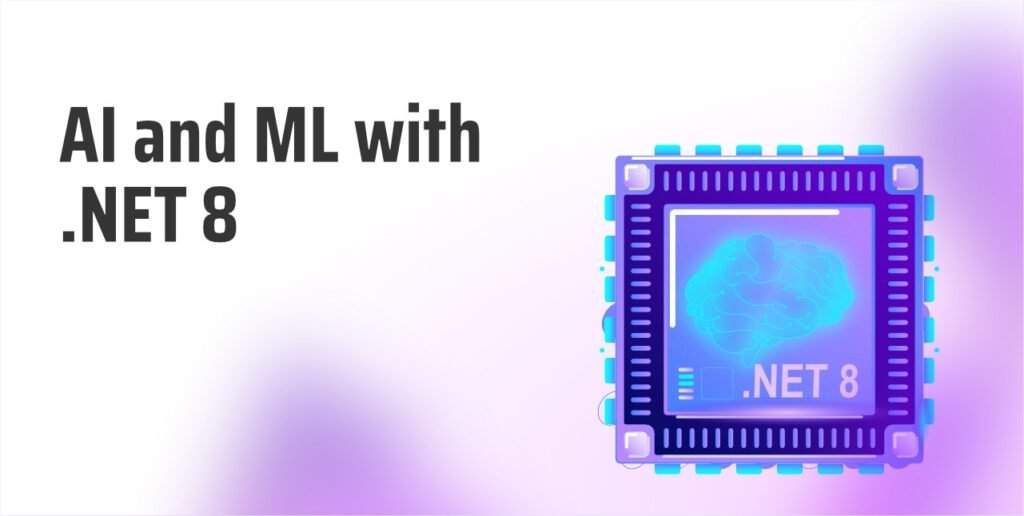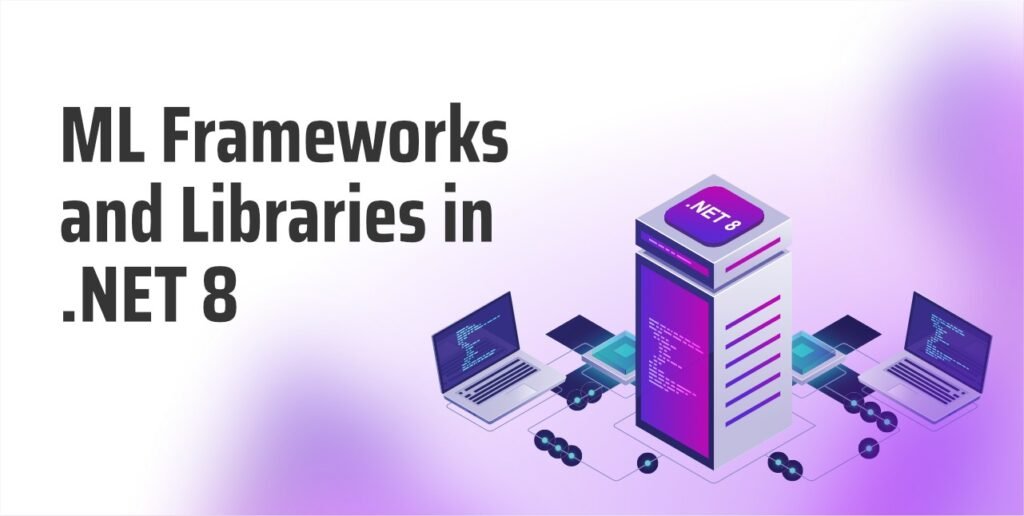ML.NET is gaining significance rapidly due to the immense advantages it offers. It is important to learn how to integrate AI and ML with .NET8
Machine learning is here to stay, as proven by its usages in traffic alerts, product recommendations, dynamic pricing, Google Translate, Online video streaming, fraud detection, social media content recommendations, and more. An important aspect is ML.NET, which offers many advantages.
Machine learning is no longer limited to enhancing user experiences through customization. Its impact is already apparent in applications such as Google Photos, which leverages machine learning to automatically categorize images based on subjects, locations, and recognizable faces. So, how can businesses use the newly launched .NET 8 for machine learning applications? To know, keep scrolling down.
In a dynamic business environment, scalability is crucial. IT services provide the flexibility to scale up or down your resources based on changing business needs. Cloud services, for instance, allow seamless expansion of storage and computational power

Serana Belluci
Product Designer
Why Use .NET 8 for AI and ML Applications?
NET 8 enhances the capabilities of AI and machine learning projects with ML.NET, a freely available and adaptable machine learning platform. This framework allows programmers to develop, train, and implement machine learning models within applications.
ML.NET can be used for predictive analytics and image recognition, all under the well-known .NET framework. A significant advantage of ML.NET is that it seamlessly integrates with the .NET framework, permitting developers to combine it effortlessly with additional tools and libraries.
ML.NET works well with ASP.NET, Xamarin, and Azure platforms. Furthermore, it supports handling extensive data sets and can be applied to a wide range of scenarios, such as image classification, sentiment analysis, and fraud detection.
How To Integrate AI and ML into. NET-Based Enterprise Products?

AI and ML provide a significant benefit by enabling personalized customer interactions. Its capacity to analyze extensive datasets facilitates data-centric decision-making, yielding actionable insights. Furthermore, it contributes to cost reduction and error minimization by automating monotonous tasks, enhancing operational effectiveness, and forecasting future trends.
However, to reap all these benefits, it is important to integrate AI and ML models with .NET-based applications. Here are some tips on how to do so.
• Find the Use Case
In this step, businesses must initiate and plan the project’s objectives and goals for AI and ML integration. This stage offers invaluable clarity on how to use ML libraries in your .NET application.
For instance, you can determine where to include ML or AI technologies in your projects, such as chatbots, virtual assistants, image analysis, decision-making tools, automation processes, or other functionalities. Once you have a clear objective, efficiently implementing and integrating becomes easy.
• Have Structured and Relevant Data from Multiple Sources
Before implementing an ML.NET solution in a practical environment, it is essential to train the Model thoroughly. Therefore, businesses should collect and systematically arrange various datasets for machine learning applications.
The team must also thoroughly examine the data to ensure its accuracy, relevance, timeliness, and precision.
• Choose the Optimal Tools or Libraries for ML
This step involves choosing an appropriate machine learning and .NET AI development framework, toolkit, or library. Before deciding on a tool, it’s essential to collaborate with a specialized ASP.NET development service. That company helps businesses adequately prepare their hardware and software to address any potential obstacles.
The selected library should integrate well with your specific needs. For machine learning applications, most .NET developers favor ML.NET, ONNX, CNTK, TensorFlow, and PyTorch due to their unique features.
• Develop the App
Once the appropriate library or framework is implemented, training the AI or ML model becomes the crucial next step. During this stage, feed the models a large array of input data and monitor their output.
The team should also examine these outcomes carefully and continually refine the data to enhance the models; ensuring they generate the expected predictions is critical.
• Integrating Model with .NET Application
Once the AI/ML model training is completed and the expected results are achieved, integrate deep learning with the .NET application. Your provider of .NET AI services will facilitate a smooth interaction between your AI/ML model and the .NET program through an appropriate API.
Additionally, teams should conduct tests to ensure the system’s compatibility, functionality, and performance. This critical stage guarantees that the integrated components function as designed.
• Choose a Continuous Monitoring Strategy
After deploying your .NET application, it’s essential to continuously check its health, performance, and response times to ensure users enjoy a smooth experience. Adopting a proactive strategy includes regularly updating your Model with new data to keep it relevant and improve its output quality. Should any defects or security issues arise, address them promptly to prevent misuse.
What are the Frameworks, and Libraries for ML in .NET?

Here is a list of frameworks and libraries that you can use in ML.NET.
• Math.NET
Math.NET is a freely available project designed to enhance and, in certain cases, replace the existing functionalities of System.Math. You can explore more about it on its website at Math.NET. Math.NET is useful in employing Numerical and Symbolic namespaces across various machine-learning algorithms. A beneficial aspect of Math.NET is its comprehensive support for F# programming.
• Accord.NET
Another open-source initiative, Accord.NET, facilitates the implementation of prevalent machine learning models. To get detailed information, visit its official site, Accord Framework. This framework is aimed at assisting in computer vision and signal processing. It simplifies algorithm application within specific project scopes.
• Numl
This framework also focuses on deploying several standard machine-learning models through experimental setups. Although Numl is the newest addition among these libraries, it requires a more comprehensive approach. Its robust capabilities offer significant advantages in particular scenarios.
• CNTK (Cognitive Toolkit)
The Microsoft Cognitive Toolkit is an influential library designed to construct neural networks that consistently train ML algorithms. Machine learning developers use this tool to enhance application functionality.
The library also enables developers to conduct complex predictive analyses. This toolkit provides support for both low-level and high-level APIs within different applications.
• PyTorch
Following its collaboration with Facebook, Microsoft has recently enhanced support for PyTorch. It is a community-driven machine-learning platform. This partnership allows .NET developers to deploy and train models using ML.NET efficiently. PyTorch optimizes data handling capabilities, enabling applications to become more scalable and adaptable.
Conclusion
Having AI/ML-enabled applications on the .NET framework has long-standing business challenges. Such challenges include managing vast amounts of data, ensuring informed decision-making, maintaining operational efficiency, and competing effectively in aggressive markets.
To tackle these issues and give developers more power, Microsoft launched .NET 8. AI/ML with .NET 8 offers innovative software solutions to address all the mentioned problems.



